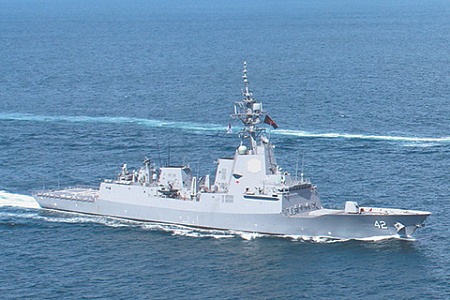
In a significant demonstration of strategic alignment, the United Kingdom and Australia have stepped up their military cooperation in the Indo-Pacific, conducting their first joint naval exercises aimed at challenging China’s expansive claims in the South China Sea. The drills underscore a growing resolve within the AUKUS security pact to act independently of the United States, signaling a potential shift in regional security dynamics as allies hedge against Washington’s political unpredictability.
The British patrol vessel HMS Spey and the Australian destroyer HMAS Sydney recently carried out freedom of navigation operations near the disputed Spratly Islands, an archipelago claimed by China, Taiwan, Vietnam, Malaysia, the Philippines, and Brunei. This maneuver is notable as the first bilateral exercise of its kind between the two AUKUS partners without direct American participation, suggesting the alliance is developing operational flexibility beyond its trilateral framework.
The joint operation reflects the UK’s post-Brexit ‘Indo-Pacific tilt,’ a strategy designed to maintain global influence by focusing on Asia’s rising economic and political centers. UK Foreign Secretary David Lammy affirmed this direction, stating a commitment to “counteract China’s dangerous, destabilizing activity” and to “double down on AUKUS.” For London, these actions are a clear message of its intent to remain an active player in upholding the international maritime order.
Australia, under Prime Minister Anthony Albanese, is navigating a complex geopolitical landscape, balancing its deep security ties with the US against its vital trade relationship with Beijing. The joint drill serves Canberra’s goal of strengthening the AUKUS partnership while simultaneously signaling a firm stance on regional security. This move is also quietly driven by concerns that a potential return of Donald Trump to the US presidency could make American security guarantees less reliable, compelling allies to foster stronger, more self-sufficient partnerships.
These bilateral exercises are positioned as a prelude to the much larger Talisman Sabre operation, a biennial US-Australian war game that in 2025 will include a record 19 nations. The scope of Talisman Sabre is also expanding geographically to include Papua New Guinea, indicating a broader, coordinated effort by Western allies and their partners to enhance their military presence and interoperability across the Indo-Pacific.
However, some analysts remain skeptical of the immediate impact of the British and Australian naval presence. Experts suggest their current influence is limited, noting that the region’s most acute tension is between China and the Philippines. The potential for Australia to become a major regional power is seen as a distant prospect, contingent on its future acquisition of nuclear-powered submarines. Similarly, the United Kingdom’s capacity to project sustained and significant military force into the region is currently viewed as constrained.
